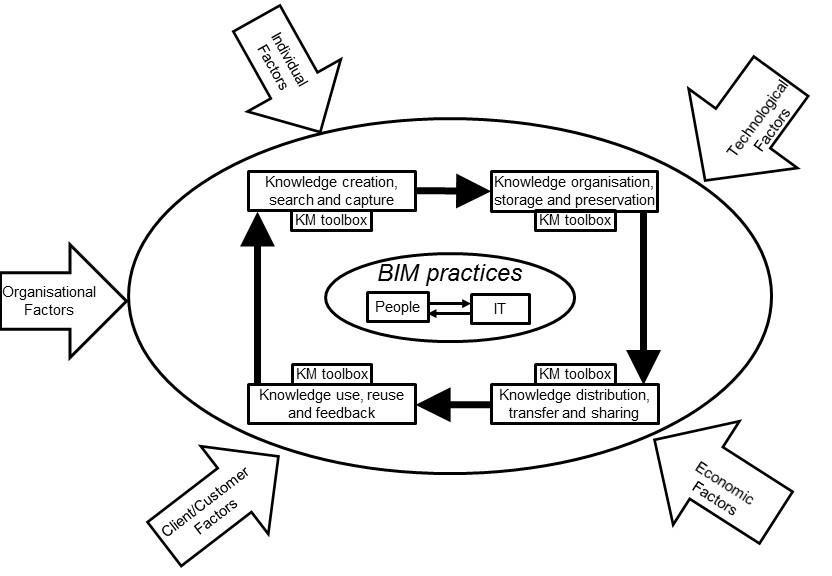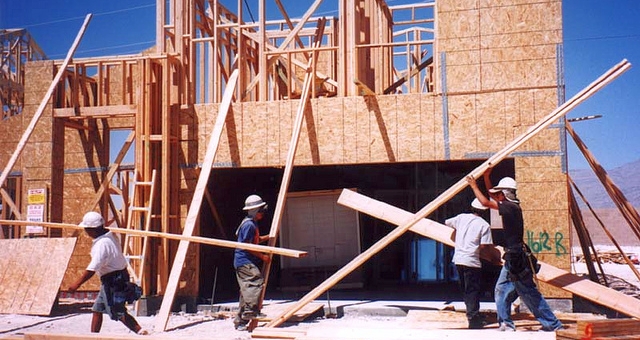
A conceptual BIM-knowledge framework for the construction industry
This article is part of an ongoing series looking at knowledge management (KM) in the building and construction industries.
The construction industry is a significant aspect of the global economy, valued at US$7.28 trillion in 20211 and considered an essential activity in most countries. However, it’s a sector that is often in the news because of serious crises and failures. Examples include London’s Grenfell Tower fire2 and Sydney’s defective apartments3.
Building Information Modeling (BIM)4, a relatively recent innovation, is helping to bring about positive change. Considered a ‘game changer’, BIM is being increasingly used worldwide to facilitate the effective management of information across the whole life cycle of a built asset, including in the design, construction, and facility management phases.
However, as I first started to document in 2016, BIM is focused on digital data management and information exchange with little consideration for experience-based knowledge, which is arguably more valuable for enabling positive improvement in the construction industry. As I’ve reported in subsequent articles in the KM in the building & construction industries series, a few researchers have explored how BIM could be evolved to incorporate knowledge management (KM).
But a lack of awareness around what KM actually involves means that advancing genuine BIM-based KM is proving to be a hard task. For example, a 2019 paper reported on a conceptual model that its authors claimed was “a road map for adapting KM process with BIM as a new KM tool.” Sadly, though, the proposed conceptual model fell well short of this claim, being little more than a technology system.
A new conceptual framework
At last, though, another conceptual framework shows significant promise. The framework, which is described in a conference paper5, builds on and references my 2016 article. It is shown in Figure 1.

The paper authors have carried out a comprehensive literature review to identify the four KM processes in the KM toolbox and the five critical factors that affect the KM processes.
Examples of the tools in the KM toolbox for each of the four KM processes are:
- Knowledge creation, search and capture – Experience (personal & company), brainstorming, coaching and mentoring, lessons learnt, best practices, job rotation, meetings, innovative practices.
- Knowledge organisation, storage and preservation – Minutes of meetings, computer files, knowledge bank (databases), internet, virtual libraries.
- Knowledge distribution, transfer and sharing – Mentoring, daily interaction, expert input, on the job training, chatting and storytelling meetings, best practices.
- Knowledge use, reuse and feedback – Knowledge/experience from previous jobs, feedback meetings, face-to-face interaction, intranet.
The five critical factors that affect the KM processes are:
- Individual psycho-social factors – These are the individuals’ psycho-social factors which are part of a KM system as well as those who are responsible for the development and implementation of the system. These factors include personal culture (values and behaviours), willingness to accept solution from others, perception of knowledge as flow or stock, psychology of the people, social settings, level of trust among members, motivation, incentives and support, level of skills and knowledge, and experience in IT.
- Organisational factors – These factors include management support, commitment and awareness, level of competition with other organisations, process problems, type of ownership, organisational structure and policy, and organisational culture.
- Economic factors – Among these factors are high cost of software procurement, high cost of hardware, desktops and networks, cost of training and operations, and financial ability of the organisation.
- Technological factors – Technological factors include IT infrastructure and support systems, hardware specifications (i.e. availability and usability of software packages, data capturing and analysis tools, and data integration tools), availability and specification of information and communication technology (ICT), continuous change and advances in the industry, and methods and tools available for KM.
- Client/customer related factors – These factors are about clients’ demands for, for example, value for money, decreased time and cost of project; improved quality of products, improved supply chain management, and improved customers relationship management.
Header image source: Joe Holland on Unsplash.
References:
- Deloitte. (2022). Global Powers of Construction 2021. July 2022. ↩
- Wikipedia, CC BY-SA 3.0. ↩
- Crommelin, L., Randolph, B., Easthope, H., & Loosemore, M. (2021, October 14.). Water leaks, cracks and flawed fire safety systems: Sydney’s apartments are riddled with building defects. The Conversation. ↩
- Wikipedia, CC BY-SA 3.0. ↩
- Ganiyu, S. A., Cidik, M., & Egbu, C. (2018, December). Knowledge management and BIM practices: towards a conceptual BIM-knowledge framework. 1st International Conference on Construction Futures-Psycon International Conference. ↩
Also published on Medium.



